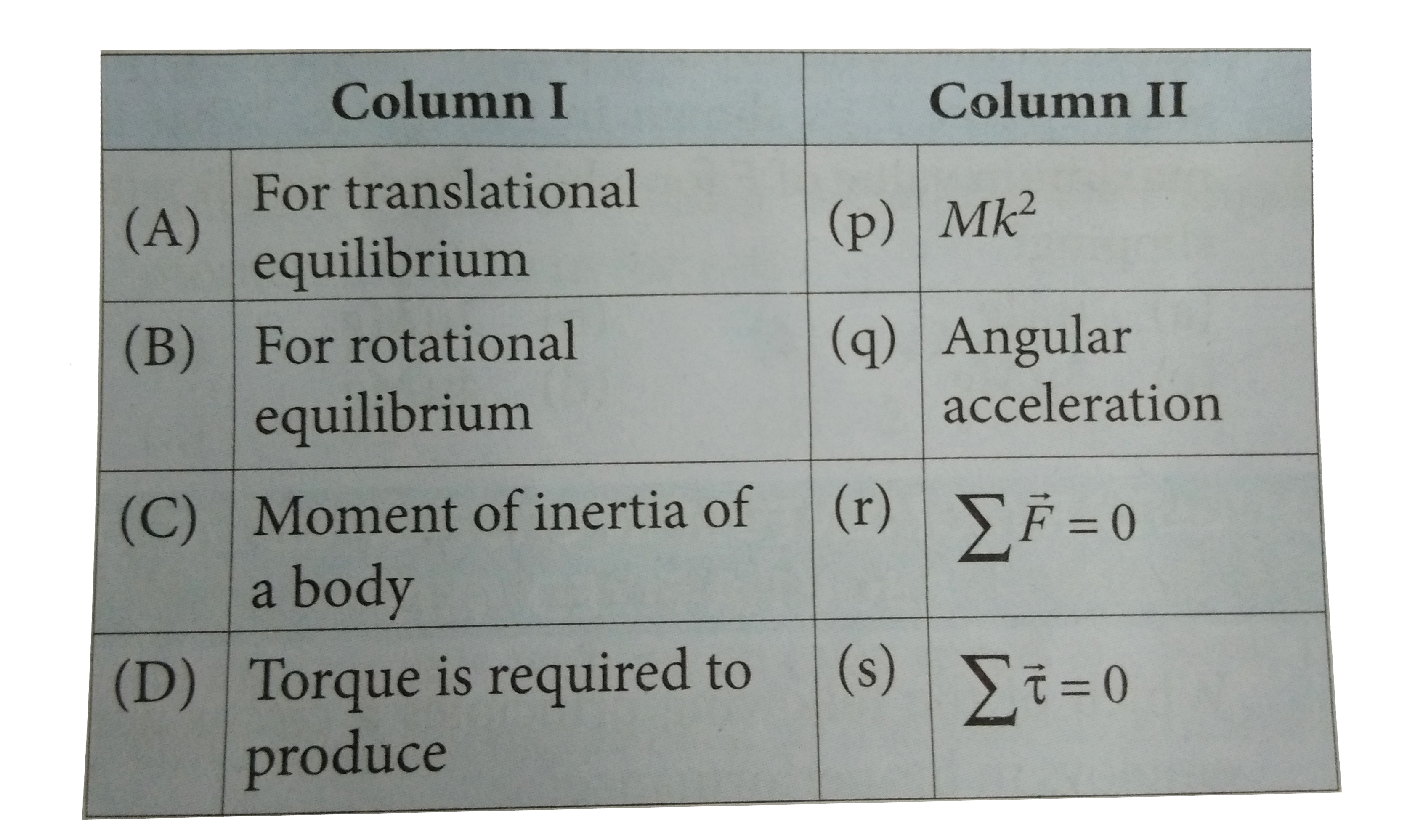Match the Column-I with Column-II for the reaction :A+B2→AB2.
 Solution in Malayalam
Solution in Malayalam
A−p,sB−rC−pD−q
Topper's Solved these Questions
- SOME BASIC CONCAPTS OF CHEMISTRY Book:BRILLIANT PUBLICATIONChapter:SOME BASIC CONCAPTS OF CHEMISTRY Exercise:LEVEL-III (Statement Type)
Explore 6 Videos
- SOME BASIC CONCAPTS OF CHEMISTRY Book:BRILLIANT PUBLICATIONChapter:SOME BASIC CONCAPTS OF CHEMISTRY Exercise:LEVEL-III (Linked Comprehension Type)
Explore 6 Videos
- SOME BASIC CONCAPTS OF CHEMISTRY Book:BRILLIANT PUBLICATIONChapter:SOME BASIC CONCAPTS OF CHEMISTRY Exercise:LEVEL-III (Numerical type)
Explore 9 Videos
- S-BLOCK ELEMENTSBook:BRILLIANT PUBLICATIONChapter:S-BLOCK ELEMENTSExercise:LEVEL-III (Linked Comprehension Type)
Explore 9 Videos
- SOME BASIC CONCEPTS OF CHEMISTRYBook:BRILLIANT PUBLICATIONChapter:SOME BASIC CONCEPTS OF CHEMISTRYExercise:LEVEL-I
Explore 55 Videos
Similar Questions
Statement 1 : Volume of a gas is directly proportional to the number of moles of gas.
Statement 2 : The ratio by volume of gaseous reactants and products is in agreement with their mole ratio.
View SolutionIsotopes are the atoms of same element: they have same atomic number but different mass numbers. Isotope have different number of neutrons in their nucleus. If an element exists in two isotopes having atomic mas 'a' and 'b' in the ratio m:n, then average atomic mass will be m×a+n×bm+n
Different isotopes of same element have same position in the periodic table. The elements which have single isotope are called monoisotopic elements. Greater is the percentage composition of an isotope, more will be its abundance in nature.
Atomic mass of boron is 10.81. It has two isotopes namely115Bandx5B with their relative abundance of 80 and 20% respectively. The value of x is
View SolutionThe measured density at NTP of He is 0.1784 g/L. What is the mass of one mole of He?
View SolutionThe radius of which of the hydrated ion is the highest?
View SolutionWhich of the following is a characteristic of both mixtures and compounds?
View SolutionMatch the reactions in Column I with nature of the reactions / type of the products in Column II.

View SolutionMatch the reactions in Column I with nature of the reactions / type of the products in Column II.

View SolutionMatch the reactions in Column I with nature of the reactions // type of the products in Column II.
View SolutionMatch the reactions in Column I with nature of the reactions // type of the products in Column II.
View SolutionMatch the Column I and Column II.,B

View SolutionMatch the reactions given in column I with the types of reactions given in column II.
 .
.
View SolutionMatch the reactions in column I with nature of the reaction/type of the products in column II.


View SolutionMatch the reactant in column-I with the reaction in column-II

View Solutionकॉलम I में दी गई अभिक्रियाओं को कॉलम II में दी गई अभिक्रियाओं की प्रकृति के साथ सुमेल कीजिए।

View SolutionMatch the reactions given in Column - I with the types of reactions given in Column - II.

View Solution

